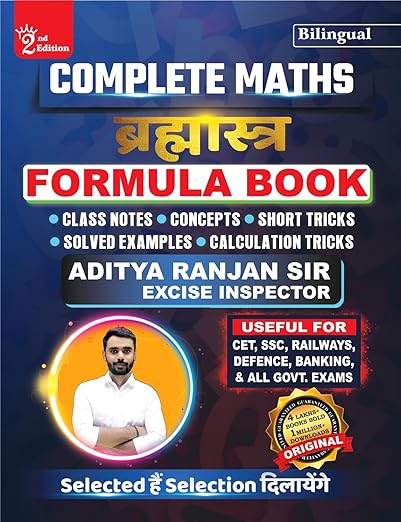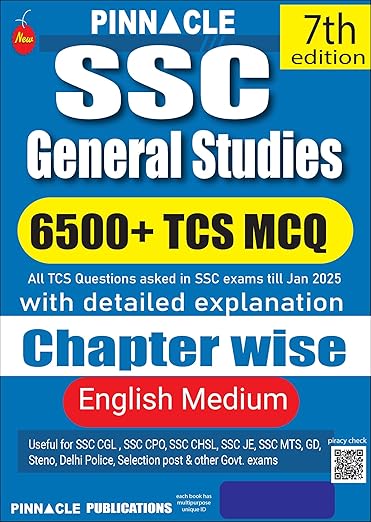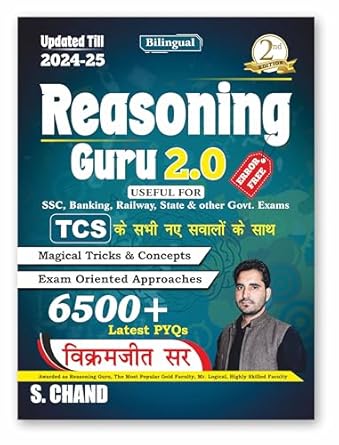- Definition offers
- Continuous and Comprehensive
- Formative Evaluation
- Important Functions
- Summative and Formative
- Features and characteristics
Continuous and Comprehensive Evaluation - Syllabus and Study Material
Evaluation: Evaluation, particularly educational evaluation, is a series of activities that are designed to measure the effectiveness of the teaching-learning system as a whole. We’ are already familiar with the fact that the teaching-learning process involves interaction of three major elements i.e., Objectives, learning experiences and learner appraisal. Evaluation takes care of all the interactive aspects of three major elements i.e.., the whole teaching-learning system.
“Evaluation is the collection, analysis and interpretation of information about any aspect of a programme of education, as part of a recognized process of judging its effectiveness, its efficiency and any other outcomes it may have.”
The above Definition offers the following
Evaluation is not just another word for assessment. The quality of our learner’s learning may well be one of the outcomes we need to evaluate. But many other factors may be equally worth looking at.
Assessment: By assessment, we mean the processes and instruments that are designed to measure the learner’s achievement, when learner are engaged in an instructional programme of one sort or another. It is concerned with ascertaining the extent to which the objectives of the programme have been met. The term assessment/is often used interchangeably with the terms evaluation and measurement. However, assessment has a narrower meaning than evaluation but a broader meaning than measurement. In its derivation, the word assess means “to sit beside” or “to assist the judge”. It, therefore, seems appropriate in evaluation studies to limit the term assessment to the process of gathering the data and fashioning them into an interpretable form; judgement can then be made on the basis of this assessment.
Assessment as we define it, precedes the final decision-making stage in evaluation e.g., the decision to continue, modify, or terminate an educational programme.
Measurement: It is mainly concerned with collection or gathering of data e.g., students scores in an examination. It is an act or process of measuring physical properties of objects such as length and mass. Similarly, in behavioural sciences, it is concerned with measurement of psychological characteristics such as neuroticism, and attitudes towards various phenomena.
Evaluation involves assessment and measurement it is a and more inclusive term than assessment and measurement.
Hence evaluation process is quite comprehensive and it is very much desired for effective teaching and learning.
Continuous and Comprehensive Evaluation
This content refers to a system of school – based evaluation of student that covers all aspect of students development. As the nomenclature also suggests, this new pattern in evaluation is not one, two, three times a year but continuous one. It is a developmental process of assessment which emphasizes on two fold objectives and these objectives are continuity in evaluation and assessment of abroad based learning and behaviourial outcomes on the other. It is a total teaching-learning process and spread over the entire span of academic session. It means regularity of assessment, frequency of unit testing, diagnosis of learning gaps, use of corrective measures, refreshing and feed back to evidence to teacher and students for their self evaluation.
Second term comprehensive that the scheme attempt to cover both the scholastic and the co-scholastic aspects of students growth and development, CCE therefore a paradigm shift in evaluation, shifting the focus from testing to holistic learning. It aims to create good citizens possessing sound health, appropriate skills and desirable qualities besides academic excellence.
Formative Evaluation
This process is used to measure and monitor the learning of students during the period of instruction.
Objective: Its main objective is to provide continuous feedback to both teacher and student concerning learning success and failures while instruction is in process. Feedback to students provides reinforcement of successful learning and identifies the specific learning errors that need correction.
Feedback to teacher provides information for modifying instruction and for prescribing group and individual remedial work. Formative evolution depends on tests, quizzes, homework, classwork, oral questions prepared for each segment of instruction. These are usually mastery tests that provide direct measures of all the intended learning outcomes of the segment.
Methodology The tests used for formative evaluation are mostly teacher-made. Observational techniques are also useful in monitoring student progress and identifying learning errors. Since formative evaluation is used for assessing student learning progress during instruction, the results are not used for assigning course grades.
Summative Evaluation: It is used to find out the extent to which the instructional objectives have been achieved particularly at the end of a terminal period.
Objective/Purpose: It is used primarily for assigning course grades or for certifying student mastery of the intended learning outcomes at the end of a particular course programme. Although the main purpose of summative evaluation is assigning grades, It also provides information judgment the appropriatentness of the course objectives and the effectiveness of instruction.
Methodology/Technique: The techniques used for summative evaluation are determined by the instructional objectives. For this evaluation, there are external examination as well as teacher-made tests, ratings etc.
Aims of CCE
- To help develop cognitive, phychomotor and affective skills.
- To lay emphasis on thought process an de-emphasize memorization.
- To make evaluation an intergral part of teacher learning process.
- To use evaluation for improvement of students achievement and teaching-learning strategies on the basis of regular diagnosis followed by remedial instruction.
- To use evaluation as a quality control device to maintain desired standard of performance.
- To determine social utility, desirability or effectiveness of a programme and take appropriate decisions about the learning, the process of learning and learning environment.
- To make the process of teaching and learning a learner-centred acitivity.
Important Functions of Continuous and Comprehensive Evaluation
Important functions of continuous and comprehensive evaluation are as follows –
- Continuous evaluation helps in regular assessment to the extent and degree of students progress (ability and achievement with reference to specific scholastic and non-scholastic areas).
- Continuous evaluation serves to diagnose weakness and permit the teacher to ascertain an individual pupil’s strengths and weakness and his needs. It provides immediate feedback to the teacher, who can then decide whether a particular unit or concept needs re-teaching into the whole class or whether a few individuals are in need of remedial instruction.
- It helps the teacher to organize effective teaching strategies,
- Mainly times, because of some personal reasons, family problems or adjustment problems, the children start neglecting their studies, resulting in a sudden fall in their achievement.
If the teacher, child and parents do not come to know about this sudden fall in the achievement and the neglect of studies by the child continues for a longer period then it will result in poor achievement and a permanent deficiency in learning for the child.
The continuous evaluation helps in bringing awareness of the achievement to the child, teachers and parents from time-to-time. They can look into the probable cause of the fall in achievement, if any, and may take remedial measures in time, to help the child overcome it at their own level. - By Continuous evaluation, children can know their strength and weakness. It provides the child a realistic self-picture of how he and she studies. It can motivate children to develop good study habits, to correct errors, and to direct their activities towards the achievement of desired goals. It helps an individual to determine the areas of instruction in which more emphasis is required.
- Continuous and comprehensive evaluation ascertains areas of aptitude and interest. It helps in identifying changes in attitude, character and value pattern.
- It helps in making decisions for the future, regarding choice of subjects, courses and careers.
- It provides information/report on the progress of students in scholastic and non-scholastic areas and thus help in predicting the future successes of the learner.
Difference between Summative and Formative Evaluation
- Summative evaluation refers to the assessment of worth whileness of the instructional programme which has already been completed, while formative evaluation refers to the assessment or worth of the instructional programme which is still going on and can still be modified.
- A formative evaluator is a partisan of the instructional sequence and does everything to make teaching-learning better. A summative evaluator is an uncommitted non-partisan person who is to pass judgment on an instructional endeavour.
- A summative evaluator gathers information and judges the merit of overall instructional sequence to adapt that sequence. The audience of summative evaluation is the consumer of the instructional programme in contrast to the formative evaluator whose audience is the designer and the developer of the programme.
- Summative evaluation, judgmental in nature. Its purpose is to appraise the teaching-learning process and to distinguish it from-formative evaluation. It is an end of the course activity concerned with assessment of the larger instructional objectives of a course or a substantial chunk of the course.
- Formative evaluation is developmental, not judgmental in nature. Its purpose is to improve students learning and instruction. Therefore, its major function is feedback to the teacher and student to locate strengths and weaknesses in the teaching-learning process in order to improve it.
- Summative evaluation is thus a judgmental activity focused on certification of students achievement But formative evaluation is a means of determining what the pupils have mastered and what is still to be mastered, thereby indicating the basis for improvement of students learning.
Basic features or characteristics of a good evaluation process are as follows
- Validity: A valid evaluation is one which actually tests what is sets out to test i.e., one which actually measures that behaviour described by the objective(s), under scrutiny. Obviously, no one would deliberately. Construct an evaluation item to test irrelevant material but very often non-valid test items are in fact used e.g., questions that are intended to test recall of factual material but which actually test the candidate’s powers of reasoning, or questions which assume a level of pre-knowledge that the candidates do not necessarily possess.
- Reliability: The reliability is a measure of the consistency with which the question, test or examination produces the same result under different but comparable conditions. A reliable evaluation item gives reproduciable scores with similar populations of students. It is therefore, independent of the characteristics of individual evaluations. In order to maintain reliability, one evaluative question should test only one thing at a time and give the candidates no other option. The evaluation should also adequately reflect the objectives of the teaching unit.
- Practicability: Evaluation procedure should be realistic, practical and efficient in terms of their cost, time taken and case of application. It may be an ideal procedure of evaluation but may not be put into practice,
- Fairness: Evaluation must be fair to all students. This can be possible by accurate reflecting of range of expected behaviours as desired by the course objectives. To keep fairness in evaluation, it is also desired that students should know exactly how they are to be evaluated. This means that students should be provided information about evaluation such as nature of the materials on which they are to be examined (i.e., Context and Objectives), the form and structure of the examination, length of the examination and the value (in terms of marks) of each component of the course.
- Usefulness: Evaluation should also be useful for students. Feedback from evaluation must be made available to the students and weakness. By knowing their strength and weakness, Students can think of further improvement. Evaluation should suggest all the needful requirements for their improvement.
- Interpretation of Results: Another factor which must be considered in the choice of a test is the ease of interpretation of test results. A test score is not meaningful unless the teacher or counselor is able to decide what significance or importance should be attached to it and to make some judgment concerning its relationship to other kind of information about the student. Nearly all test publishers produce manuals designed to aid the teacher in interpreting test results.
But these manuals very greatly on quality and in the thoroughness with which they do this importance job. From the point of view of the teacher, principal, or counselor, the quality of the test manual should be just as important a factor in the choice of a test as the quality of the test itself.
Taxonomy of educational Objectives
| Cognitive Domain | Affective Domain | Conative Domain |
| Category | Category | Category |
| Knowledge | Receiving | Impulsion |
| Komprehension | Responding | Manipulation |
| Application | Valuing | Control |
| Analysis | Conceptualization | Co-ordination |
| Synthesis | Organization | Naturalization |
| Evaluation | Characterization of a value system | Habit-formation |




0 Comments